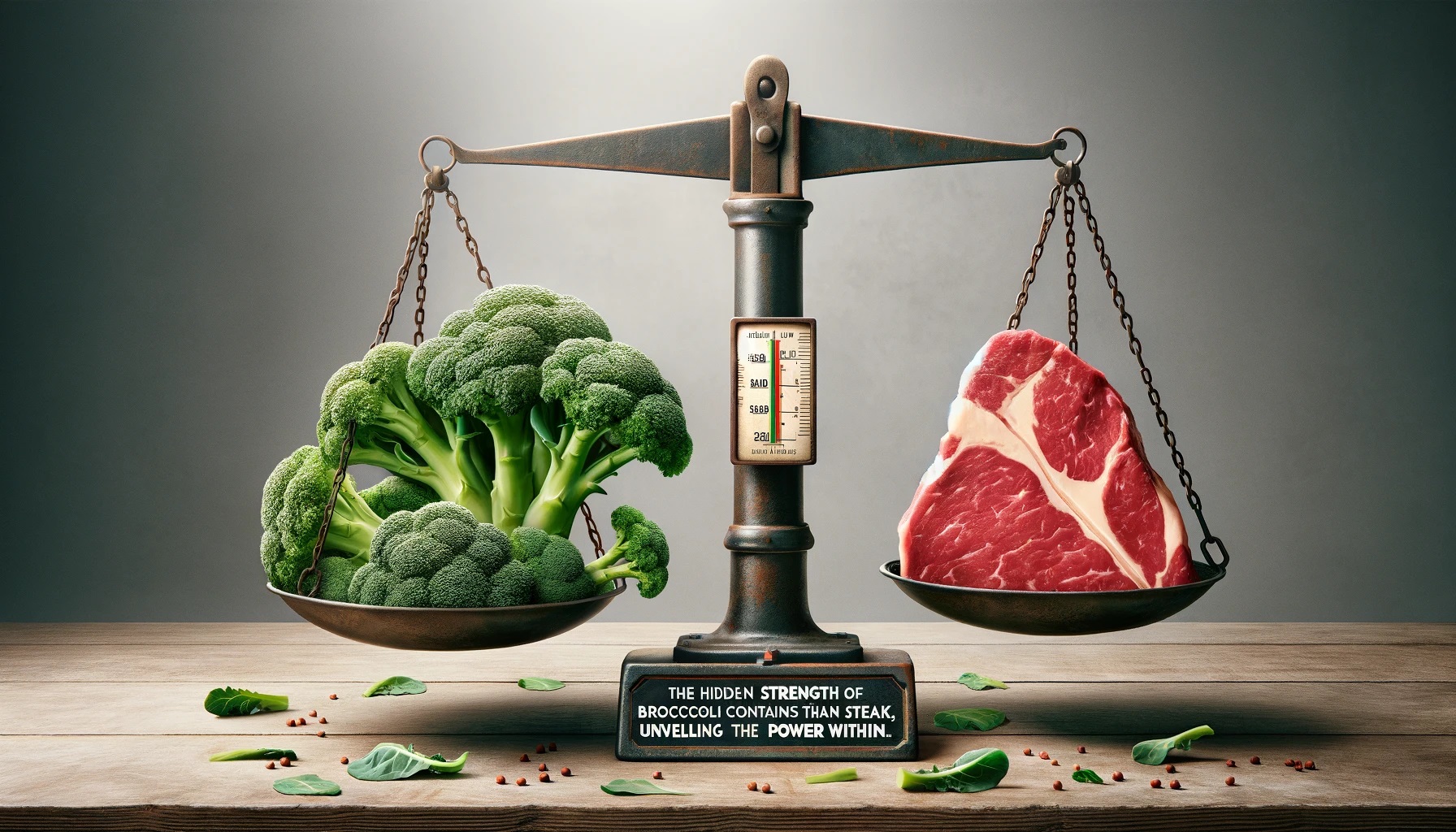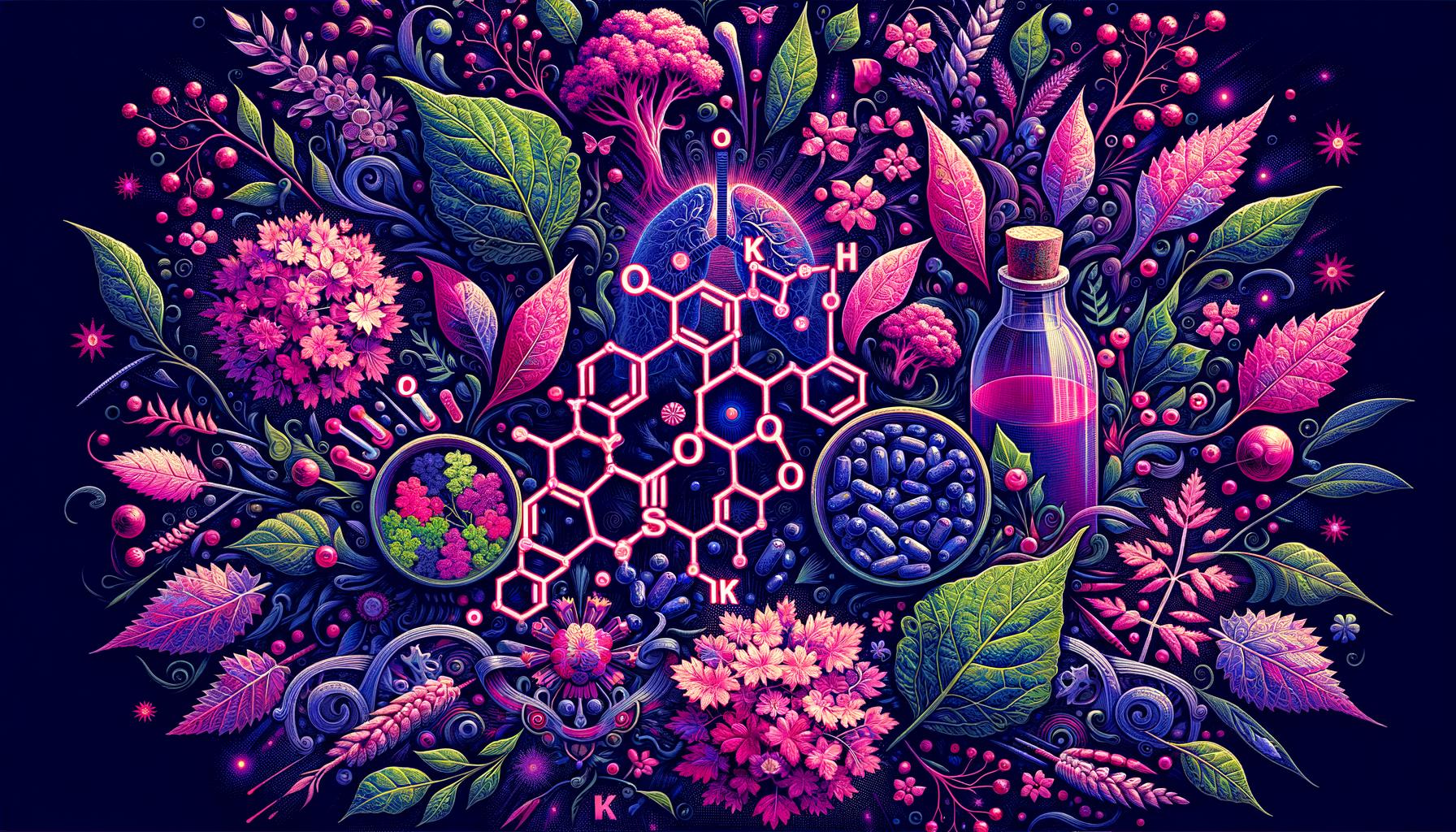· fitness · 19 min read
The Impact of Water Intake on Body Functions
Explore the crucial role of hydration in maintaining body functions, the science behind it, and strategies for optimal water intake.

In This Post
The Fact Why Should I Care How To Put In Action Start Tomorrow Guide How does it effect my ability to focus How does it impact my daily life How does it help me make friends How does it help me manage stress How does it effect my mood Summary: Remember Refresher Checklist The Full Research Article CitationsPrint Out The Tomorrow Checklist!
Sign up for our newsletter and receive a copy today, so that, you can start tomorrow! Or the next day, or the day after that. I forget everything and starting things is hard at least for me so these checklists are godsend.
Print Out The Remember Refresher Checklist!
Sign up for our newsletter and download your own copy of the Remember Refresher Checklist, so that, you can easily put it on your fridge and help you stay on target towards your WHY. Every little bit helps.
Introduction to Hydration
Hydration is more than just a simple act of drinking water. It’s a fundamental part of maintaining good health and ensuring our bodies function correctly. Despite its importance, many of us often overlook or misunderstand the critical role water plays in our daily lives. By delving into the basics of hydration and its profound effects beyond mere thirst quenching, we can begin to appreciate and implement better hydration practices in our routines.
Understanding the Basics of Hydration
At its core, hydration refers to the process of providing water to the body to ensure it functions optimally. Water makes up approximately 60% of the adult human body, highlighting its necessity in various bodily processes, including:
- Regulating body temperature
- Facilitating nutrient transportation
- Aiding in saliva production and joint lubrication
- Promoting efficient digestive health
Hydration isn’t just about warding off thirst—it’s about maintaining a delicate balance. Dehydration, or the lack of adequate water intake, can disrupt this balance, leading to diminished physical and cognitive performance and, in severe cases, critical health issues.
Why Hydration is More Than Just Drinking Water
To fully grasp the essence of hydration, it’s essential to recognize that it involves more than merely consuming water. It’s about:
- Recognizing the signs of dehydration early
- Understanding individual hydration needs, especially during physical activity or high temperatures
- Implementing effective hydration strategies before, during, and after exercise
- Being aware of overhydration dangers, such as water intoxication
Essentially, hydration is a dynamic state that requires attention to not just the quantity of water consumed but also the timing and the body’s signals.
Checklist for Staying Hydrated
- Monitor your daily water intake to ensure you’re meeting your personal hydration needs.
- Pay attention to your body’s thirst signals and respond promptly.
- Be mindful of your activity level and the environment, adjusting water intake accordingly.
- Include foods with high water content in your diet to aid hydration.
- Limit or avoid drinks that can lead to dehydration, such as those with high caffeine or alcohol content.
By focusing on these key points, we can start to build habits that promote adequate hydration levels, thus supporting our body’s needs and enhancing our overall health and wellbeing.
The Science of Hydration and Body Temperature Regulation
Hydration plays a vital role in regulating our body temperature, a process essential for maintaining homeostasis and ensuring our bodies function optimally. When we drink water, it doesn’t just quench our thirst; it also aids in the complex system of keeping our internal temperature within a safe range.
How Water Intake Affects Temperature Regulation
Our bodies are like a sophisticated machine that operates best within a specific temperature range. Water consumption directly impacts this system, facilitating heat dissipation through various mechanisms, including sweating and respiration. When we’re hydrated, our blood volume remains at an ideal level, allowing it to circulate through the body more efficiently. This efficient circulation is crucial because our blood helps distribute heat throughout the body, as well as bringing heat to the skin’s surface where it can be released.
- Sweat, the body’s primary cooling mechanism, is composed mainly of water. When we sweat, our skin gets moist, and as this sweat evaporates, it cools us down. This process is significantly less effective if we’re dehydrated.
The Role of Water in the Body’s Cooling Mechanisms
Water’s role in our body’s natural cooling mechanisms is both simple and critical. Here’s a quick rundown:
- Sweating: As mentioned, sweating is the key process through which our bodies cool down. Adequate hydration ensures that we can produce enough sweat during heat exposure or physical activity.
- Respiration: Water vapor is also lost when we exhale, another way our bodies can regulate temperature, especially during colder conditions.
Dehydration and Its Impact on Body Heat
Dehydration, or not having enough fluid in the body, can severely disrupt our body’s ability to regulate temperature. Here’s what happens when there’s not enough water in our system:
- Reduced Sweat Production: Our bodies might not produce enough sweat to cool down effectively, leading to an increase in body temperature.
- Decreased Blood Volume: With less fluid available, our blood volume decreases, reducing our body’s ability to transport heat.
Here’s a Checklist to Ensure Proper Hydration for Optimal Body Temperature Regulation:
- Drink water throughout the day, not just when you’re thirsty.
- Monitor the color of your urine; it should be light yellow, indicating proper hydration.
- Increase your water intake during hot weather or when engaging in physical activity.
- Consider beverages that replenish electrolytes after intense workout sessions.
- Avoid or limit drinks with caffeine and alcohol, as they can lead to fluid loss.
By understanding the integral role water intake plays in regulating our body temperature, we can better manage our hydration levels and, by extension, our overall health and well-being. Whether we’re working out, facing a hot day, or just going about our daily activities, keeping our water intake consistent is key to avoiding dehydration and its adverse effects on body heat regulation.
Essential Functions of Water in the Body
Water, the most abundant substance in the human body, plays a myriad of crucial roles in our health and well-being. Beyond quenching our thirst, water is a vital nutrient that participates in virtually every bodily function. Here, we explore some of the essential functions of water in the body: nutrient transportation, saliva production, joint lubrication, and its critical importance for digestive health.
Nutrient Transportation and the Role of Water
One of the primary roles of water in the body is to transport nutrients to where they are needed. Water is a solvent, which means it can dissolve other substances. This ability makes it perfect for carrying and distributing vital nutrients, such as vitamins, minerals, and glucose, throughout the body.
- Water helps in the absorption of these nutrients in the digestive system.
- Once absorbed, water then transports these nutrients to cells and organs.
- It also plays a key role in circulating oxygen in the bloodstream.
This process is essential for energy production, growth, and the overall functioning of the body. Without adequate water intake, our bodies would struggle to receive the nutrients they need to operate efficiently.
Saliva Production and Joint Lubrication: Why Hydration Matters
Water is also fundamental in the production of saliva and the lubrication of joints. Saliva is not only crucial for the digestion of food but also for maintaining oral health. It helps in breaking down food particles, facilitating easier swallowing, and even fights off bacteria, protecting the teeth and gums from decay and disease.
Similarly, water acts as a lubricant in the joints. It is a component of synovial fluid, which reduces friction between the cartilage and joints, helping in smooth movement and preventing wear and tear.
- Proper hydration ensures that saliva and synovial fluid are produced sufficiently.
- It helps in maintaining oral health and ensuring that our movements are fluid and pain-free.
The Critical Importance of Hydration for Digestive Health
The digestive system relies heavily on water to function properly. Water aids in the breakdown of food so that the body can absorb the nutrients. It also softens stool, which helps prevent constipation and maintains a healthy digestive tract.
Checklist for Maintaining Hydration for Digestive Health:
- Drink water before, during, and after meals to help digestion.
- Include water-rich foods in your diet, such as fruits and vegetables.
- Monitor your water intake to ensure you’re drinking enough throughout the day.
A well-hydrated body supports the health of the digestive system, reducing the risk of digestive disorders and ensuring that the body can efficiently process and absorb nutrients from food.
In summary, water’s role in the body extends far beyond simply quenching thirst. It is integral to nutrient transportation, saliva production, joint lubrication, and digestive health, among other functions. Ensuring adequate hydration levels is therefore essential for maintaining overall health and well-being. Remember, the next time you reach for a glass of water, you’re not just satisfying thirst—you’re supporting critical bodily functions.
Understanding Thirst and Hydration Needs
The Delayed Thirst Response and Its Implications
Our bodies have a built-in alarm system designed to tell us when we need water; this is known as the thirst response. However, this system doesn’t always work in real-time. By the time you’re feeling thirsty, you might already be slightly dehydrated. This delay can have several implications, especially during activities that cause extensive fluid loss, like exercising in high temperatures. Understanding the mechanics behind thirst can help us preempt dehydration, maintaining optimal hydration levels and preventing the adverse effects that come from too little water intake.
How to Recognize and Act on Early Signs of Dehydration
Recognizing early signs of dehydration is crucial for maintaining hydration and can help prevent the need for more drastic rehydration techniques later on. Early signs include:
- Dry mouth and thirst
- Fatigue or tiredness
- Dark yellow urine
- Headache
- Dry skin
- Dizziness
When you notice these signs, it’s important to increase your water intake immediately. Take these symptoms seriously as early indicators of dehydration, and act swiftly to replenish your fluids.
Hydration Strategies: How Much and When
Creating an effective hydration strategy involves understanding not just how much to drink but also when. The amount of water needed can vary based on your body size, the climate you’re in, and your activity level. However, a good rule of thumb is to drink at least 8-10 glasses of water a day. For those involved in physical activities or in high temperatures, more water may be necessary.
Checklist for Staying Adequately Hydrated:
- Drink a glass of water first thing in the morning.
- Carry a water bottle with you throughout the day.
- Drink water before, during, and after exercise.
- Eat fruits and vegetables high in water content.
- Monitor the color of your urine; aim for light yellow.
- Set reminders to drink if you often forget.
Listening to your body’s thirst signals is essential, but remember that thirst isn’t the best indicator of your actual hydration needs. Drinking water at regular intervals throughout the day, regardless of whether you feel thirsty, is the best strategy to ensure you remain hydrated. Adopting these habits can help you maintain adequate hydration levels, which is vital for all bodily functions and overall health.
Hydration During Exercise and High Temperatures
When it comes to maintaining hydration, everyday needs can significantly increase during physical activity and exposure to high temperatures. The demands of exercise and heat put the body under stress, making efficient hydration strategies vital for health and performance. Understanding the body’s hydration needs during these conditions is essential for preventing dehydration and ensuring optimal functioning.
The Increased Need for Water During Physical Activity
During exercise, the body works harder than usual, leading to an increase in metabolic rate and body temperature. To regulate this temperature and maintain a balance, the body sweats, losing water and electrolytes in the process. This fluid loss can quickly lead to dehydration if not adequately replaced, impacting endurance, strength, and overall performance. It’s also worth noting that muscle contains a large percentage of water, and dehydration can negatively affect muscular function and repair.
- Ensure adequate pre-exercise hydration: Begin physical activities well-hydrated to offset fluid losses early.
- Monitor sweat rate: Understanding your sweat rate can help you determine the amount of fluid you need to replace during exercise.
- Consume water and electrolytes: During extended periods of physical activity, replenishing electrolytes is as important as water intake to prevent electrolyte imbalances.
Effective Hydration Strategies for Athletes and the Physically Active
Athletes and those engaged in regular physical activity should adopt specific hydration strategies to ensure efficient water intake and prevent dehydration. Here is a checklist to help maintain hydration levels:
- Drink water throughout the day: Keep your body hydrated by drinking water at regular intervals, irrespective of your thirst signals.
- Tailor fluid intake to exercise intensity and duration: The longer and more intense the exercise, the more fluids you’ll need to replenish.
- Include electrolyte-rich beverages in your regimen for long sessions: Sports drinks can replace lost electrolytes and enhance hydration.
- Adjust your fluid intake based on environmental conditions: Hot and humid conditions increase sweat rate and fluid loss, requiring a higher fluid intake.
- Use the color of your urine as a guide: Aim for a pale yellow color as a sign of proper hydration.
Safeguarding Against Dehydration in Extreme Heat
High temperatures, irrespective of physical activity, increase the body’s fluid requirements. The risk of dehydration becomes higher as the body tries to cool itself through sweating. Taking proactive steps is crucial in preventing dehydration in these conditions:
- Increase your water intake: Drink more fluid than usual when you know you’ll be in hot conditions.
- Wear lightweight and breathable clothing: This helps increase the efficiency of sweat evaporation, aiding in body cooling.
- Limit exposure during peak heat: Whenever possible, try to avoid significant outdoor activity during the hottest parts of the day.
- Recognize the signs of dehydration early: Symptoms such as dizziness, headache, and dry mouth indicate the need for immediate rehydration.
Hydration during exercise and exposure to high temperatures is not just about drinking water but doing so wisely and strategically. By understanding the increased demands placed on the body and applying effective hydration strategies, individuals can maintain optimal performance and health even under stress.
Overhydration: Recognizing and Avoiding Water Intoxication
Hydration is crucial for maintaining bodily functions, but there’s also a risk associated with consuming too much water, known as overhydration or water intoxication. This condition happens when the balance of electrolytes in your body is disrupted due to excessive water intake, leading to a dangerous drop in sodium levels, a condition known medically as hyponatremia.
Understanding the Risks of Overhydration
Water is a vital element in our body’s regulation systems, helping in temperature control, nutrient transportation, and waste removal. However, there is such a thing as too much water. When your kidneys are overwhelmed by a high volume of water, they can’t expel it fast enough, causing the sodium in your body to dilute. This imbalance can lead to swelling of cells, which is particularly harmful when it happens in brain cells.
Overhydration can be as dangerous as dehydration and needs immediate medical attention in severe cases. The symptoms of water intoxication are similar to dehydration, which can be confusing. They include nausea, headache, confusion, and in severe cases, seizures or coma. Recognizing the fine line between adequate hydration and overhydration is essential, especially during intense physical activity or high-temperature conditions where fluid intake often increases.
To help avoid overhydration, consider the following checklist:
- Monitor your water intake, especially during exercise. Drink when you’re thirsty and avoid sticking rigidly to the “8 glasses a day” rule as everyone’s needs are different.
- Pay attention to your body’s signals. If you’re not sweating out the excess water or if you have to use the restroom frequently, you might be drinking too much.
- Balance your electrolyte levels. During extended physical activity, include drinks that replenish your electrolytes.
- Understand your sweat rate. If you’re engaging in activities that cause you to sweat profusely, your hydration needs will increase, but remember to hydrate gradually.
- Listen to your thirst signals. They are your body’s way of saying it needs fluids but don’t overdo it.
The goal isn’t just avoiding dehydration but ensuring a proper balance between hydration and maintaining electrolyte levels. Overhydration and water intoxication are often overlooked, especially by athletes or individuals engaged in high endurance activities who consume large amounts of water, believing that more is better. However, understanding the risks and recognizing the signs can prevent complications associated with overhydration.
In conclusion, while maintaining adequate hydration levels is essential for various body functions, including nutrient transportation, digestive health, and body temperature regulation, it’s crucial to be aware of the risks associated with overhydration. By monitoring your intake and understanding your body’s hydration needs, you can enjoy the benefits of staying hydrated without the dangers of water intoxication.
FAQs on Hydration
How Much Water Should I Drink to Avoid Dehydration?
The amount of water you should drink daily can vary based on several factors including your age, weight, the climate you live in, and your activity levels. However, a general guideline is to aim for 8-10 glasses (64-80 ounces) of water a day. It’s important to listen to your body’s thirst signals and respond to them promptly. Also, remember to increase your water intake during physical activity and in high temperatures to compensate for increased fluid loss through sweat.
Can You Rehydrate Yourself Too Quickly?
Yes, drinking too much water in a short period can lead to overhydration or water intoxication. This occurs when your kidneys cannot remove the excess water, and the electrolyte content of your blood becomes diluted, leading to a condition called hyponatremia. Symptoms of overhydration include nausea, headaches, confusion, and in severe cases, can be life-threatening. To avoid overhydration, sip water throughout the day rather than consuming large amounts quickly and be mindful of your body’s needs.
What Are the Signs of Dehydration During Exercise?
Recognizing the signs of dehydration during exercise is crucial for preventing it. Here’s a quick checklist:
- Thirst: Although an obvious sign, it often occurs after dehydration has begun.
- Dry mouth: Saliva production decreases, leading to a dry feeling in the mouth.
- Fatigue: You may feel more tired than usual, even with light physical activity.
- Reduced urine output: Your urine may be darker and less frequent.
- Headaches: Dehydration can trigger headaches or migraines.
- Dizziness: You might experience light-headedness or vertigo, especially upon standing.
- Increased heart rate: Your heart might work harder to pump blood.
Staying ahead of these signals by hydrating before you feel thirsty, especially during exercise or high temperatures, is key to preventing dehydration. Pay attention to your sweat rate, as it can indicate how much fluid you’ve lost and need to replace. Remember to hydrate with water or electrolyte drinks to maintain proper electrolyte balance and adequate hydration levels.
Conclusion
As we wrap up our journey through the intricacies of hydration and its profound impact on body functions, it’s essential to recognize the pivotal role that water plays in our overall health and well-being. Our exploration has taken us from understanding the basics of hydration to recognizing the signs of dehydration and the risks of overhydration, emphasizing how crucial a balanced approach to water intake is.
Embracing a Hydrated Lifestyle: A Checklist
- Monitor Your Water Intake - Ensure you’re consuming an adequate amount of water daily to meet your body’s hydration needs.
- Listen to Your Thirst Signals - Pay attention to your body’s natural thirst response and act on it to maintain hydration levels.
- Adjust Hydration Based on Activity Levels - Increase your water intake during physical activity or in high temperatures to compensate for fluid loss through sweat.
- Recognize Signs of Dehydration Early - Learn the early signs of dehydration, such as dry mouth or fatigue, to prevent it from progressing.
- Understand Your Body’s Needs - Remember that everyone’s hydration needs are different. Factors like weight, activity level, and environmental conditions all play a role.
- Use Hydration Strategies Wisely - Employ effective hydration strategies, especially during exercise, to maintain electrolyte balance and prevent dehydration.
- Avoid Overhydration - Be aware of the risks of water intoxication and consume water thoughtfully to avoid disrupting your body’s natural electrolyte balance.
Water is not just a component of what we drink; it’s integral to almost every function our body performs. From regulating body temperature and aiding in digestive health to ensuring nutrient transportation and maintaining saliva production and joint lubrication, water is the cornerstone of life. Staying adequately hydrated supports overall health, enhances performance, and can even prevent chronic diseases.
The journey to understanding and practicing proper hydration doesn’t end here. It is an ongoing process of tuning into your body’s needs, recognizing the effects of your environment on your water intake requirements, and making hydration a priority in your daily routine. By adopting hydration strategies tailored to your personal needs and lifestyle, you’re taking a significant step towards a healthier, more vibrant life.
In the context of physical activity and varying environmental temperatures, staying diligent about hydration becomes even more critical. Being proactive about hydration can help mitigate the risks associated with dehydration and overhydration, such as compromised physical performance, heat-related illnesses, and water intoxication.
In conclusion, water’s role in the body extends far beyond mere thirst. It’s about nurturing our bodies with the essential element of life, ensuring every cell, tissue, and organ functions optimally. By understanding the impacts of water intake on body functions and adopting proper hydration habits, we empower ourselves to lead healthier, more fulfilling lives. Let’s make a conscious effort to stay hydrated, not just for the immediate benefits but for our long-term health and well-being.
Relevant External Links
In rounding off our discussion on the vital role of hydration in body functions, we present to you a selection of helpful resources. These links lead to reputable sources that further elaborate on hydration’s multifaceted benefits and underscore the importance of maintaining adequate hydration levels. Delving into these resources offers deeper insights into hydration strategies, preventing dehydration, and understanding water’s indispensable role in our health and well-being.
Mayo Clinic – Hydration: Why it’s so important
For a comprehensive overview of the significance of hydration, Mayo Clinic’s article on the “importance of staying hydrated” serves as an excellent starting point. This resource elucidates the broad spectrum of hydration’s benefits, from regulating body temperature to preventing infections. It’s an essential read for those seeking to fathom why water intake is pivotal for our health.
CDC – Water & Nutrition
Understanding water’s nutritional benefits is fundamental, and the CDC’s guide on “Water & Nutrition” provides extensive information on how hydration impacts our nutritional status. This resource dives into how water intake influences everything from nutrient transportation to ensuring optimal digestive health. It is an invaluable asset for those intent on optimizing their hydration strategies.
American Heart Association – Staying Hydrated - Staying Healthy
Lastly, the American Heart Association’s exploration of “the relationship between hydration and health” found here, highlights the critical connection between adequate water consumption and cardiovascular health. This resource is particularly useful for individuals engaging in physical activity, emphasizing the need for tailored hydration needs and preventive measures against dehydration and overhydration.
Checklist for Maintaining Proper Hydration
- Monitor Your Water Intake: Ensure you’re drinking the recommended amount based on your activity level, health status, and climate.
- Listen to Your Thirst Signals: Use thirst as a guide but remember the delayed thirst response, especially in older adults.
- Recognize Signs of Dehydration: Stay vigilant for symptoms such as dry mouth, tiredness, or light-headedness.
- Adjust According to Activity: Increase your water intake in high temperatures and during exercise to compensate for fluid loss.
- Incorporate Hydration Strategies: Plan your water consumption throughout the day to avoid dehydration or overhydration.
- Mind Your Diet: Remember that fruits and vegetables can also contribute to your daily water intake.
- Stay Informed: Keep educating yourself about the importance of hydration by consulting reputable sources and healthcare professionals.
By adhering to these guidelines and enriching your knowledge through the provided links, you’re taking decisive steps towards ensuring optimal hydration and, by extension, promoting your overall health and well-being.





